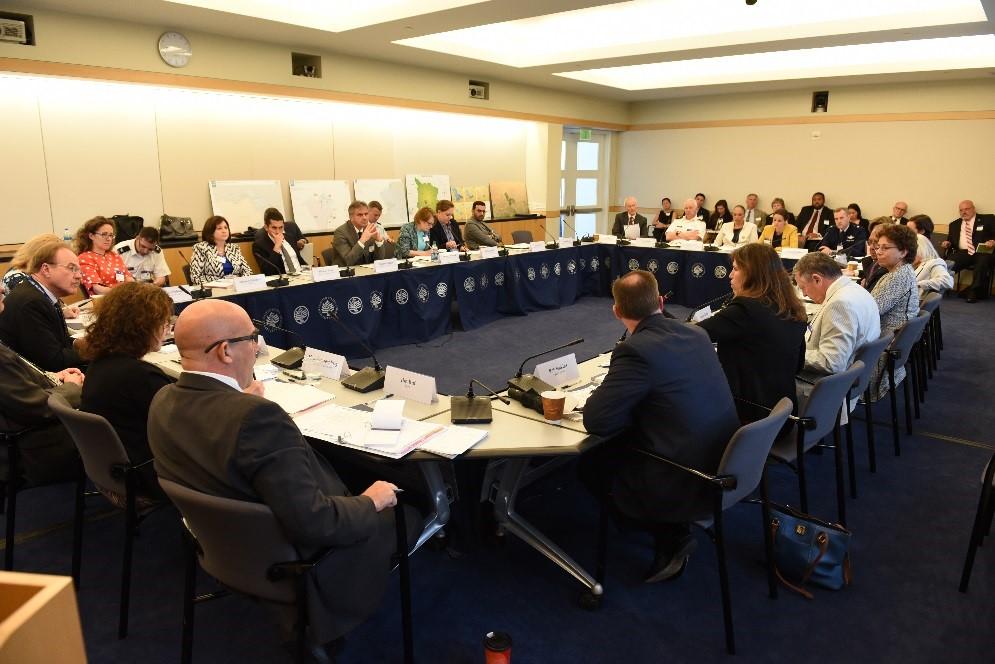Since 2005, the Civilian Military Working Group (CMWG) served as an informal body that meets periodically to discuss policy and operational issues relevant to civilian and military personnel involved primarily in international humanitarian crises, relief and recovery. The group shared information about education and engagement opportunities.

The CMWG existed to make civilian and military organizations more effective when operating in shared spaces.
It achieved this goal this through its role in:
- Convening. The CMWG is the recognized venue for experts to build knowledge, share information, and advance the dialogue among the humanitarian NGO community and government civilian and military agencies.
- Consultation. The CMWG serves as a consultative mechanism for the crisis response community to exchange expert input on doctrine, policy guidance, operational procedures, etc., which affect the operational environment during humanitarian crises, relief and recovery.
- Communication. This group shares good practices and lessons learned, identifies emerging issues and specific concerns, and communicates to policy makers, the training /education community and implementers.
- Collaboration. The group also serves as forum for collaborative problem solving and prepares our respective communities to engage effectively in complex conflict prevention, response, and humanitarian assistance and disaster response operations.
Participants
The CMWG was open to any civilian or military organization that is involved across the spectrum of conflict affected and fragile states. The direction and priorities of the CMWG were determined by consensus of the community. Members include a wide range of actors from the U.S. government as well as the non-governmental organization (NGO) and international organization (IO) communities.
Thought Leadership
The CMWG was created in response to the need identified by humanitarian NGOs to make a distinction between civilian and military actors and activities when both are present and operating in the same environment. As a result, in 2007, InterAction and the Department of Defense signed the Guidelines for Relations between U.S. Armed Forces and Non-Governmental Humanitarian Organizations in Hostile and Potentially Hostile Environments. In addition to being incorporated in U.S. military doctrine, these guidelines have also become a model for similar region-specific guidelines around the world.
Additionally, the CMWG played a key role in the development of other publications – The Guiding Principles for Reconstruction and Stabilization, Measuring Progress in Conflict Environments (MPICE) and The Guide for Participants in Peace, Stability, and Relief Operations.
Meeting Topics
CMWG topics arose from participant identified community-wide problems and challenges. The style of the meeting was driven by the topic and objectives. Meetings were primarily informational, discussion-oriented, or focused on developing a concrete product. The CMWG operates under Chatham House rules.
Examples of topics included:
- Civilian and Military feedback to the update of the Lucens Guidelines for Protecting Schools and Universities from Military Use during Armed Conflict
- Brief on the development of the Humanitarian Military Operations Coordination Center (HUMOCC), a new coordination structure within the United Nations Office for the Coordination of Humanitarian Affairs to be utilized in humanitarian and disaster responses
- The formulation of the Institute for Military Support to Governance
- Civilian and military coordination within the Ebola response